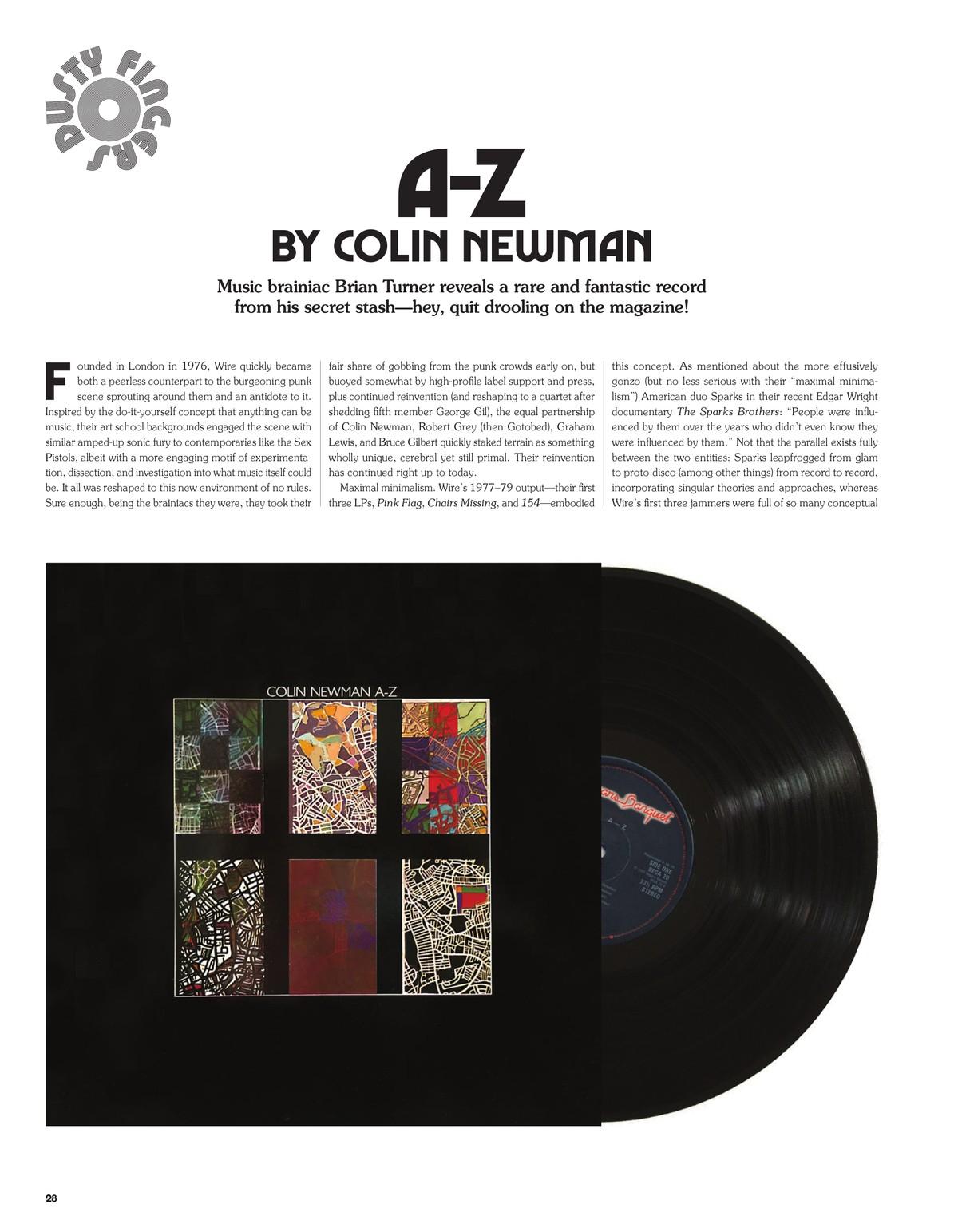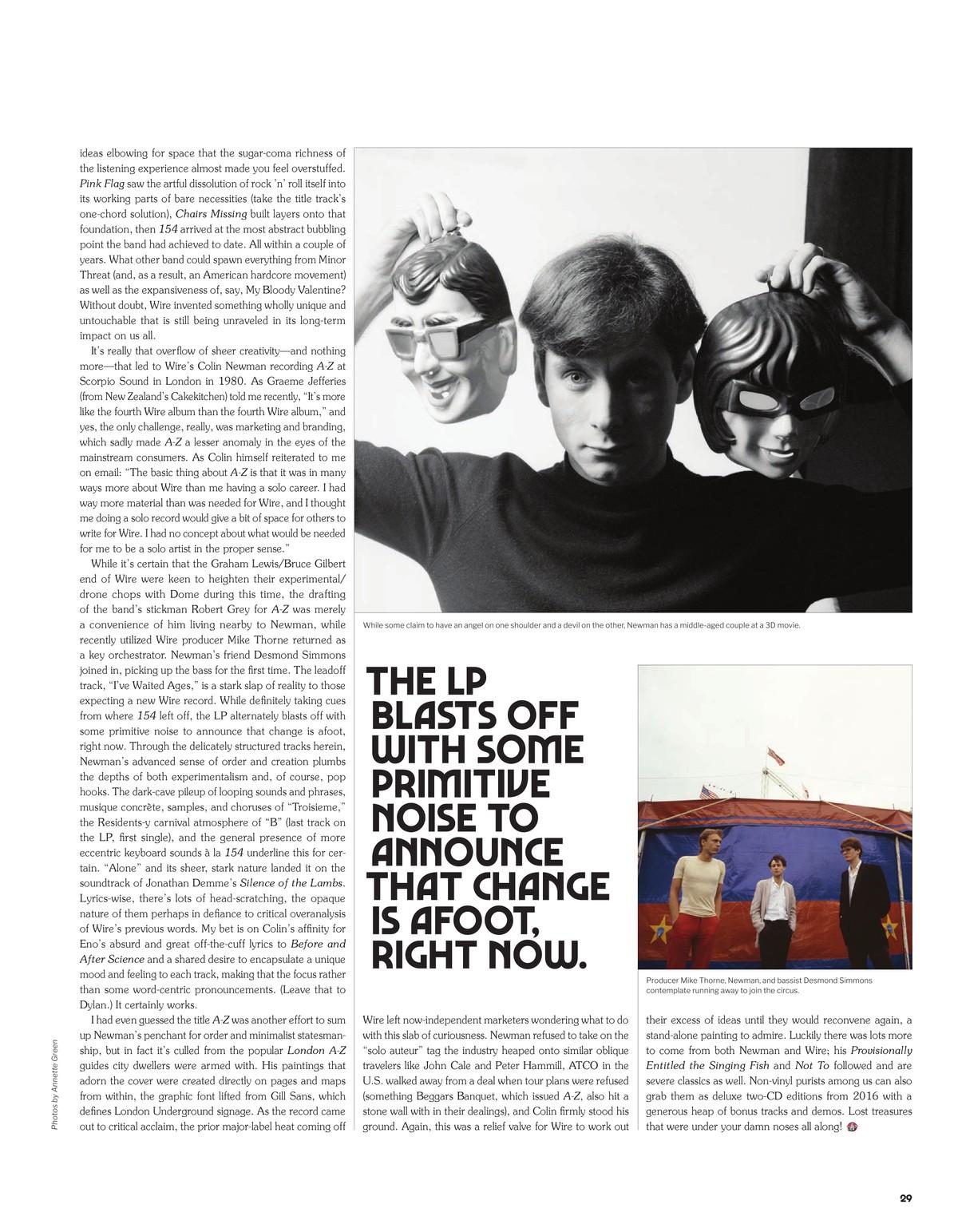Dusty Fingers
A-Z
Music brainiac Brian Turner reveals a rare and fantastic record from his secret stash—hey, quit drooling on the magazine!


Founded in London in 1976, Wire quickly became both a peerless counterpart to the burgeoning punk scene sprouting around them and an antidote to it. Inspired by the do-it-yourself concept that anything can be music, their art school backgrounds engaged the scene with similar amped-up sonic fury to contemporaries like the Sex Pistols, albeit with a more engaging motif of experimentation, dissection, and investigation into what music itself could be. It all was reshaped to this new environment of no rules. Sure enough, being the brainiacs they were, they took their fair share of gobbing from the punk crowds early on, but buoyed somewhat by high-profile label support and press, plus continued reinvention (and reshaping to a quartet after shedding fifth member George Gil), the equal partnership of Colin Newman, Robert Grey (then Gotobed), Graham Lewis, and Bruce Gilbert quickly staked terrain as something wholly unique, cerebral yet still primal. Their reinvention has continued right up to today.

